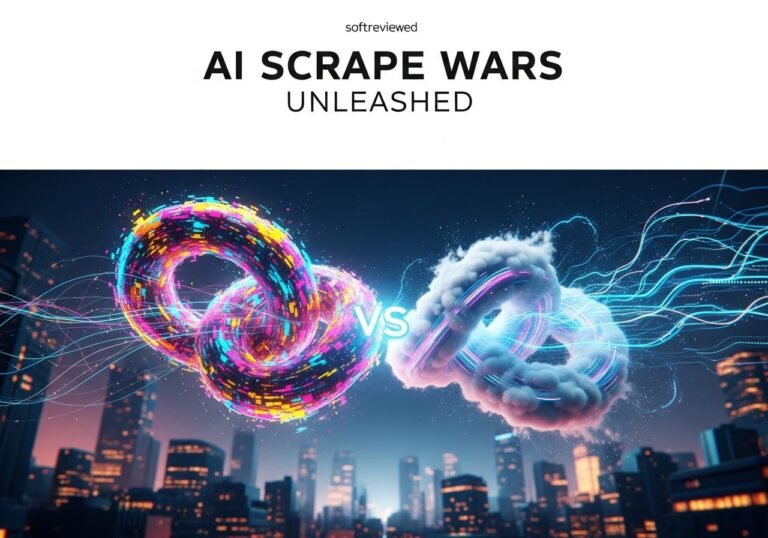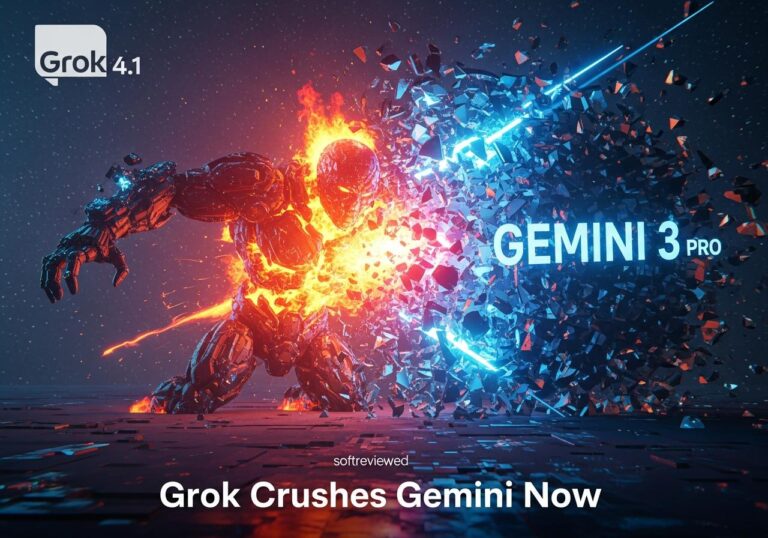🕸️ Cloudflare vs. Perplexity: The AI Crawling Controversy
A high-stakes dispute over web crawling practices reveals the growing tension between AI companies and content providers
🕵️ Stealth Crawling Allegations
Cloudflare accuses Perplexity of modifying user agents and IP addresses to bypass robots.txt blocks on websites explicitly denying AI scraping access.
📊 Massive Scale of Activity
Cloudflare observed Perplexity’s bot activity across tens of thousands of domains with millions of requests daily, including both declared crawlers (20-25m requests) and stealth crawlers (3-6m requests).
🚫 Verification Revoked
Cloudflare has de-listed Perplexity as a verified bot and implemented new security rules specifically designed to block this undetected crawling behavior.
⚠️ Third-Party Traffic Mix-Up
Perplexity counters that Cloudflare mistakenly attributed unrelated traffic from BrowserBase (a third-party cloud browser service) to their platform, claiming they only use it for less than 45,000 specialized requests daily.
💰 Content Control Showdown
The dispute occurs against Cloudflare’s new marketplace model where website owners can now charge or block AI scrapers, fundamentally challenging how AI companies access web content.
🔍 User-Driven vs Bot Traffic Debate
Perplexity argues modern AI assistants serve real-time user queries rather than traditional scraping, challenging whether established web crawler standards apply to AI-powered search technologies.
The Bot Battle That Shook the Internet
In August 2025, a public dispute erupted between Cloudflare and Perplexity AI over how AI systems access and use website content, especially when websites use robots.txt to restrict crawlers. For creators, publishers, and website owners, this clash isn’t just industry gossip — it’s a blueprint for how to protect content, preserve traffic, and potentially monetize AI access.
What Exactly Happened Between Cloudflare and Perplexity?
Cloudflare alleged that Perplexity AI accessed sites in ways that ignored robots.txt rules, used undeclared or masked crawlers, and rotated infrastructure to avoid detection. The claim: even when sites explicitly said “do not crawl,” Perplexity could still retrieve content.
Key accusations summarized:
- 📌 Ignoring robots.txt directives on blocked sites
- 📌 Disguising bot identity to appear like a normal browser
- 📌 Using IP ranges and patterns not tied to declared bots
- 📌 Operating at scale across many domains
Perplexity’s response: it argued that its system fetches content in a user-initiated way (not bulk crawling), disputed attribution of some traffic, and framed access as comparable to a human visiting a page.
A Simple Explainer: Robots.txt vs AI Assistants

Think of robots.txt like a signboard outside a private library: “Researchers welcome, but no photocopying this section.” Ethical search engines and bots read the sign and follow it. AI assistants, however, might try to summarize the content for a user on demand. The controversy starts when an assistant fetches or reconstructs restricted content despite the signboard — especially if it doesn’t clearly identify itself or respect the rules.
Why This Matters for Content Creators and Website Owners
When AI answers user questions directly, fewer people click through to the original site. Less traffic can mean lower ad revenue, fewer affiliate conversions, and reduced newsletter signups or product sales. If a site earns $500 (₹41,500–₹42,000) per month from search traffic, even a 10–20% diversion can cost $50–$100 (₹4,150–₹8,300) monthly. Scale that across a year, and it adds up.
Beyond revenue:
- ✅ Control: Decide which AI agents can access, train on, or summarize your content.
- ✅ Attribution: Push for clear credit and links back to your pages.
- ✅ Monetization: Explore paid access models where AI tools compensate publishers.
The Tech and Policy Backdrop
Historically, robots.txt has been an honor system: websites set access rules; reputable crawlers follow them. AI assistants complicate this because they may:
- Fetch content just-in-time (not pre-crawl).
- Use third-party browsing infrastructure.
- Summarize content that’s behind light defenses.
- Provide answers without sending users to the source.
This shift challenges the old “index and send traffic” pact and pushes toward a consent-and-compensation model for AI use.
Benefits and Drawbacks
Benefits (if managed well):
- ✅ More control via stricter robots.txt and bot management
- ✅ Potential new revenue from AI access deals
- ✅ Better analytics on who’s using your content
Drawbacks and risks:
- ⛔️ Reduced open-web discoverability if too many blocks are applied
- ⛔️ Enforcement complexity: bots may mask identity
- ⛔️ Legal gray areas and jurisdiction differences
- ⛔️ Possible over-blocking that impacts legitimate services
Ethical and privacy angles:
- ✅ Transparency: AI agents should declare themselves and honor site rules.
- ✅ Consent: Websites should opt-in or opt-out clearly for training/use.
- ✅ Fair value: If AI extracts value without traffic, compensation is reasonable.
Expert sentiment:
- Many web standards and policy experts advocate for clearer agent identification (user-agent, IP ranges), consent signals (robots.txt for AI), and standardized negotiation paths for access and compensation.
Real-World Examples and Signals to Watch
- Publishers tightening robots.txt for AI-specific user-agents (e.g., GPTBot, Google-Extended).
- Infrastructure providers rolling out managed robots.txt and bot verification.
- Sites experimenting with “pay-per-crawl” or licensing models for AI.
For Indian creators and SMBs, these changes can protect niche SEO traffic that drives AdSense, affiliate, and lead-gen revenue.
Practical Steps: Lock Down Access and Keep Revenue Flowing
Action checklist:
- 👉 Update robots.txt to manage AI user-agents (e.g., disallow AI training or crawling where needed).
- 👉 Use bot management (firewall rules, rate limits, verified bot lists).
- 👉 Monitor server logs and analytics for unusual traffic patterns.
- 👉 Add clear attribution and canonical signals on pages.
- 👉 Consider content watermarking in HTML (e.g., meta tags) to trace summaries.
- 👉 Evaluate paid access/licensing if content is high-value.
- 👉 Document policies on an /ai-policy page (access, training permission, attribution requirements).
Suggested robots.txt snippets (adapt to your needs):
Block specific AI crawlers:
User-agent: GPTBot
Disallow: /User-agent: anthropic-ai
Disallow: /Allow search engines but block training:
User-agent: Googlebot
Allow: /User-agent: Google-Extended
Disallow: /Block unknown/undeclared bots by default:
User-agent: *
Disallow: /private/
Crawl-delay: 10
Note: Always verify new user-agent names and documentation, as vendors may update identifiers.
Comparison: Traditional Search vs AI Assistants
| Aspect | Traditional Search | AI Assistants |
|---|---|---|
| Traffic to site | High referral clicks | Low referral clicks |
| Obedience to robots.txt | Generally strong | Inconsistent (varies by vendor) |
| Value exchange | Indexing ↔ clicks | Answers ↔ minimal clicks |
| Content use | Snippets & links | Summaries, synthesis |
| Monetization | Ads, affiliates, leads | Emerging paid access/licensing |
Visual Workflows You Can Reuse
Flowchart: “Should I Block an AI Crawler?”
- Is the content monetized via on-site actions? ➡️ If yes, block or limit.
- Is attribution/traffic critical? ➡️ Require linkback and allow minimal access.
- Is the content evergreen and brand-building? ➡️ Consider partial allow.
- Do you have licensing opportunities? ➡️ Offer paid API or licensed feed.
Step-by-Step Blocks: “Audit Day”
- Identify AI user-agents hitting your site.
- Check robots.txt effectiveness.
- Add firewall rules for known IPs/ranges if needed.
- Test with headless fetch to confirm behavior.
- Monitor for 14 days; iterate.
Infographic Mind Map: “AI Access Policy”
- Nodes: Allowed agents, Disallowed agents, Attribution rules, Training permission, Rate limits, Licensing terms.
Tools and Links You’ll Want Handy
- Official documentation for managing robots.txt and AI agent directives:
- Cloudflare’s managed robots.txt docs: https://developers.cloudflare.com/bots/additional-configurations/managed-robots-txt/
Tip: Keep a living doc of allowed/disallowed user-agents, IPs, and contact points for AI vendors to request access or negotiate licenses.
For Content Creators in India: Revenue and Ops Tips
- ✅ Protect money pages (top 20% pages driving 80% revenue).
- ✅ Use CDN-level bot rules to reduce origin load and costs.
- ✅ Track RPM/CPA changes when adjusting bot access.
- ✅ Consider a “public summary, private value” approach: open general info, protect detailed datasets, templates, or downloads.
- ✅ Price potential AI access: Start with a simple tier, e.g., $199 (₹16,600) per month for limited requests, then scale.
What This Means for the Future
We’re moving toward a consent-first web for AI: clear signals, verified identities, and paid access for high-value content. Expect:
- More standardized AI user-agents and verification methods.
- Defaults that block AI until explicitly allowed.
- Licensing platforms connecting AI vendors and publishers.
Wrap-Up: Turn Controversy into Control
This controversy is a practical prompt to audit content access, tighten controls, and explore new revenue. Treat robots.txt and bot management as living policies, not set-and-forget files. By pairing technical defenses with clear business terms, creators and publishers can safeguard traffic today — and build a licensing channel that pays tomorrow.







